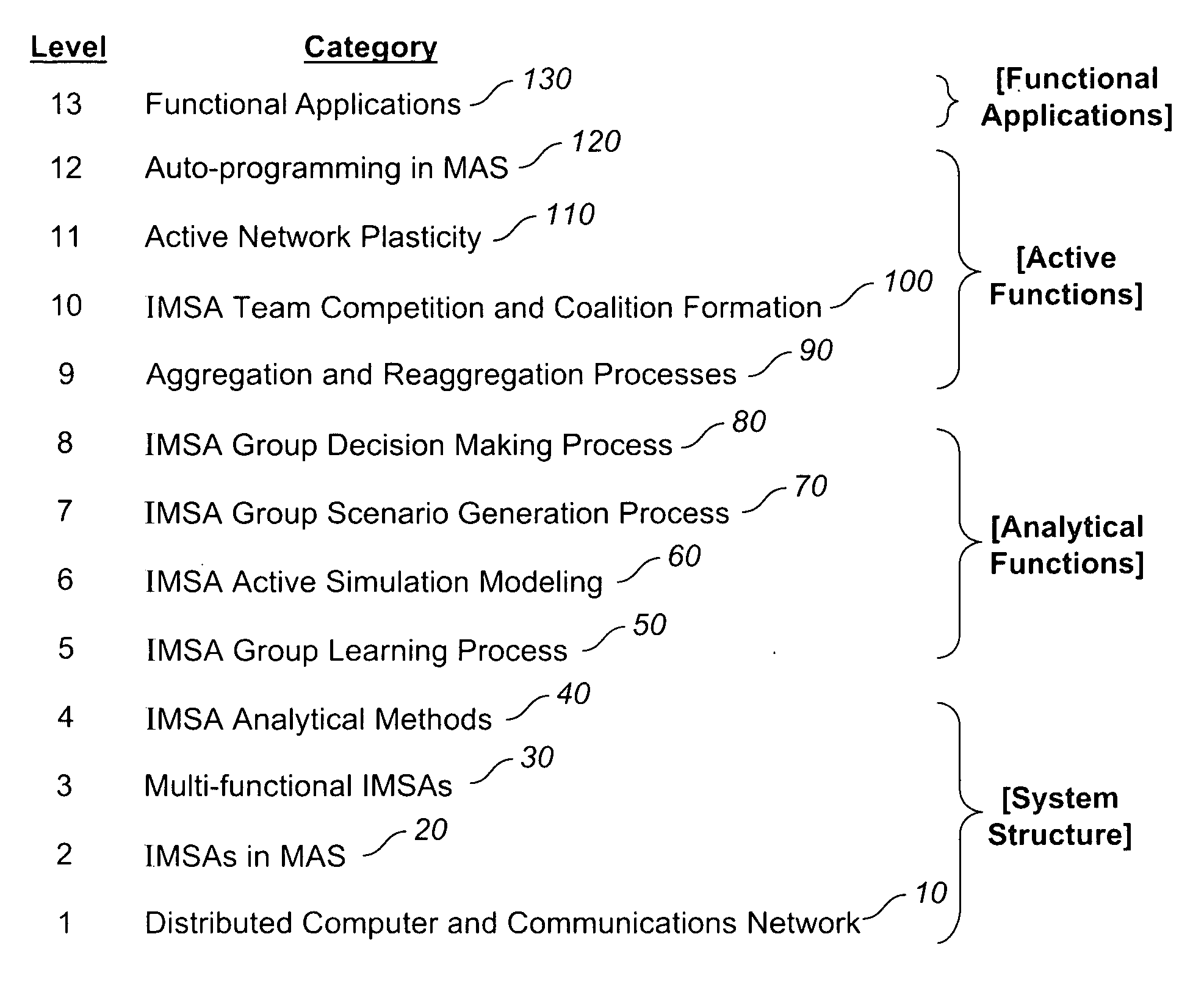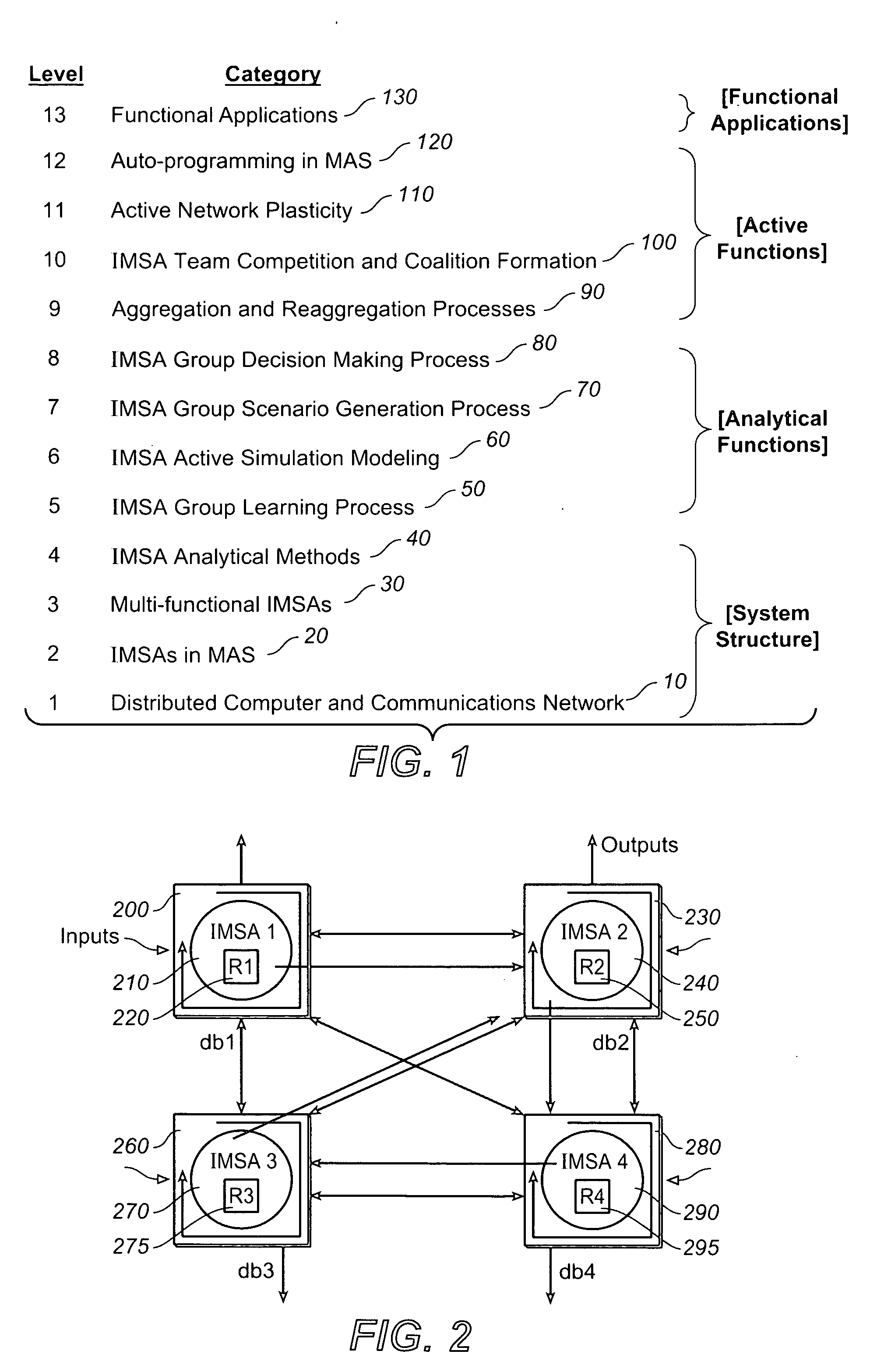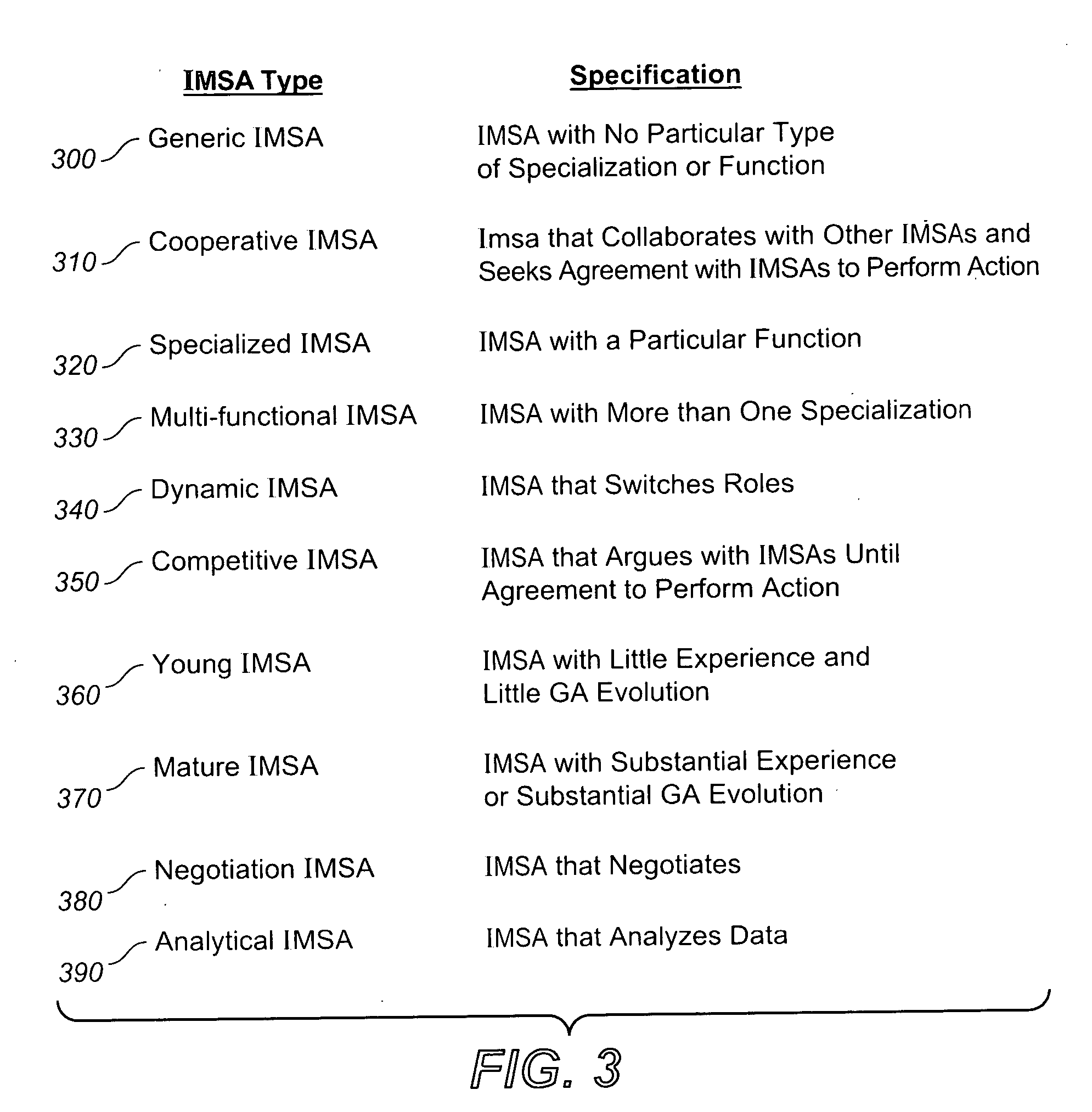System, methods and apparatus for complex behaviors of collectives of intelligent mobile software agents
a technology collectives, applied in the field of system, methods and apparatuses for complex behaviors of collectives of intelligent mobile software agents, can solve the problems of complex computer simulation and decision capabilities, inability to fully extend research to the self-organization of multi-agent system behaviors for multiple applications such as collective robotics or automated commercial systems, and inability to achieve novel computational systems capable of self-organizational behaviors. , to achieve the effect of optimizing adaptive self-organization operations and
- Summary
- Abstract
- Description
- Claims
- Application Information
AI Technical Summary
Benefits of technology
Problems solved by technology
Method used
Image
Examples
Embodiment Construction
Intelligent Mobile Software Agents
[0075] The main methods of inputting, ordering, searching, fetching and outputting data sets in a dynamic distributed computer system are utilized by intelligent mobile software agents (IMSAs). IMSAs are sophisticated software programs that can adapt, learn, generate or terminate code, move from machine to machine, and perform various functions. IMSAs include search agents, analytical agents for data mining and pattern recognition, negotiation agents, collaboration agents and decision-making agents. IMSAs may use game theoretic modeling, simulations and scenarios in order to perform a function or activate an application. The combination of multiple IMSAs in a dynamic distributed computer system constitutes a multi-agent system (MAS). Teams of agents have specialized (and multi-specialized) functions in the MAS of a dynamic distributed computer system. The present system is characterized by a range of main operations and processes of the dynamic di...
PUM
 Login to View More
Login to View More Abstract
Description
Claims
Application Information
 Login to View More
Login to View More - R&D
- Intellectual Property
- Life Sciences
- Materials
- Tech Scout
- Unparalleled Data Quality
- Higher Quality Content
- 60% Fewer Hallucinations
Browse by: Latest US Patents, China's latest patents, Technical Efficacy Thesaurus, Application Domain, Technology Topic, Popular Technical Reports.
© 2025 PatSnap. All rights reserved.Legal|Privacy policy|Modern Slavery Act Transparency Statement|Sitemap|About US| Contact US: help@patsnap.com



